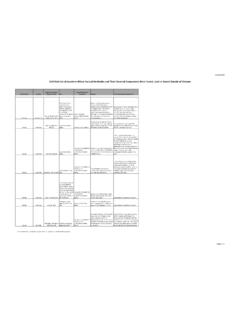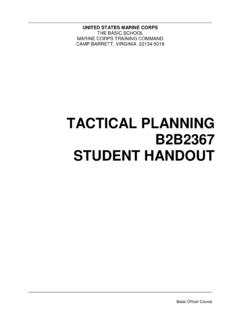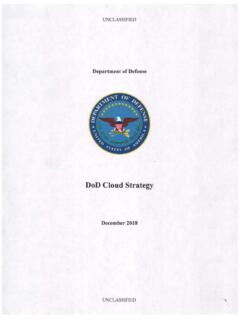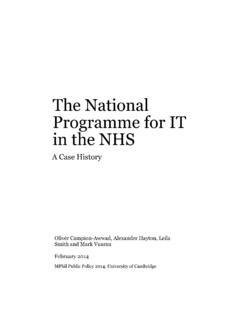Transcription of INTEGRATION OF E-LEARNING SYSTEM AND ITS EFFECT TO …
1 International Journal of English and Education ISSN: 2278-4012, Volume:10, Issue:1, January 2021 238 | INTEGRATION OF E-LEARNING SYSTEM AND ITS EFFECT TO THE STUDY HABITS AND PARTICIPATION OF JUNIOR HIGH SCHOOL STUDENTS Jesson L. Hero1, Aaron C. Dela Cruz2, Rosalia M. Paz3, Ma. Editha R. Caparas, EdD4, 1 Faculty, Obando Montessori, Inc., 2 Faculty, San Jose Del Monte National Trade School, 2 Faculty, San Jose Del Monte National Trade School, 3 School Head, Pajo Elementary School, 4 Education Program Supervisor, Department of Education 4 Education Program Supervisor, Department of Education ABSTRACT One of the crucial developments in the education paradigm is the rapid growth of Information and Communications Technology (ICT).
2 As a result, most private schools are now at the height of infusing the E-LEARNING SYSTEM and are seen as one of their advances in the learning management SYSTEM . Hence, this study tries to look into a way to examine and extrapolate the INTEGRATION of E-LEARNING SYSTEM and its correlation to the Junior High School students' study habits and participation. Using a descriptive-correlation method, the researchers believe in finding a link between and among variables. The study's respondents consist of one hundred and twelve (112) Junior High School students in one private school in the district of Obando, Bulacan, Philippines.
3 The findings of the study indicate that the E-LEARNING SYSTEM is functional, reliable, usable, and efficient. The level of study habits for high school students is high, and they often participate in class discussions. In addition, a strong link or a significant correlation was observed between the INTEGRATION of the E-LEARNING SYSTEM and students' study habits and participation. It is recommended that schools continue to provide teachers with training and skills services to help achieve the adoption of the E-LEARNING framework.
4 Keywords: E-LEARNING SYSTEM , Study Habits, Participation, Junior High School Students INTRODUCTION There has been a major shift in the classroom over the past few decades, especially in presenting the content of the curriculum in the most comfortable way. This is why teachers are now changing their instructional practices and methodologies from the conventional way of teaching lessons to a new way of incorporating Information and Communications Technology (ICT). ICT's exponential change has been brought a huge shift in education that empowers people to learn new skills and approaches and transform the quality of the curriculum through the E-LEARNING framework (Caraig et al.)
5 , 2020). The emergence of the E-LEARNING framework creates new possibilities for more immersive and fun. In addition, it opens a pathway on how the learning process becomes more conducive, meaningful and fruitful for learners (Hero, 2019). International Journal of English and Education ISSN: 2278-4012, Volume:10, Issue:1, January 2021 239 | The implementation of E-LEARNING in providing the curriculum material, as stipulated by Tanveer (2011), has opened new horizons for the teacher to provide a more engaging and learner-centered classroom environment.
6 In response, a growing number of academicians are now utilizing and integrating the E-LEARNING SYSTEM in the teaching and learning process. With these technical developments in education, various tools for learning management or E-LEARNING programs are emerging as the key reform in education and jive on recent trends in the educational paradigm. Mapuva (2009) reported that the inclusion of E-LEARNING in the implementation of the curriculum had eased the pressure of coping with an influx of students pursuing good education to develop their skills and abilities for the ever demanding job market.
7 The results of Asad et al. (2020) found that through ICT and E-LEARNING framework, students could learn more easily, which can also make their process simpler for teachers in the new age of technology. Dziuban et al. (2018) expressed that hybrid learning and E-LEARNING SYSTEM are widely use to provide students with their own speed, time, and place with their versatility in delivering learning opportunities. Encarnacion, Gallang, & Hallar (2020) found out that by advancing the conventional classroom environment into a network, E-LEARNING could theoretically shape the future of education.
8 E-LEARNING SYSTEM has been described as one factor affecting the performance of online learning because preparation can improve motivation, performance, participation and engagement (Bovermann, Weidlich, & Bastiaens, 2018). Despite the benefits and advancement that students can get in the E-LEARNING SYSTEM , there is a paucity of studies that still reveal a problem or gap in the E-LEARNING INTEGRATION . To wit, findings from Dagada and Chigona (2013) revealed that few academics had applied the technology to their pedagogy.
9 In addition, educational growth is also required to effectively incorporate E-LEARNING , which affects students' participation and academic performance. Therefore, to make it more useful, particularly during the learning process, the school needs to help teachers and students develop their E-LEARNING platforms. Students of an online curriculum should have technical expertise and comprehension in the same way. Without these, it will discourage those who do not and present challenges or maybe a fiasco in incorporating E-LEARNING into the learning environment and students' participation and engagement (Hameed et al.)
10 , 2007). E-LEARNING tends to be ideal for students with good independent learning, persuasive capacity, and elevated research and study habits; these types of individuals are a subset of the learner population (Hameed, Badii, & Cullen, (2008). E-LEARNING is also very useful for the tactical type; learning may not be the right toll for curriculum teaching, which is deep and wide (Beckett, 2004). Ensuring an E-LEARNING SYSTEM 's success is a daunting challenge. Some concerns of introducing an E-LEARNING framework, as Pham & Huynh (2017) explained: the high rate of failure of learning initiatives, the low adaptation and low happiness of E-LEARNING consumers, and the inefficiency of E-LEARNING programs on learning outcomes, weak attendance, and low research patterns.















